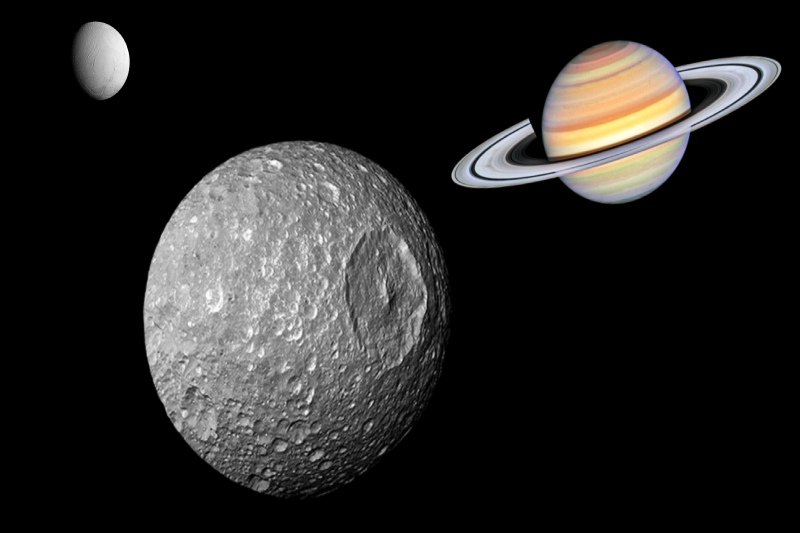Scientists Find Hidden Ocean Under Saturn’s ‘Death Star’ Moon

Researchers have found a recently generated “force” beneath one of the most famous moons of Saturn.
With its gray, icy shell and sizable impact crater on its surface, Saturn’s Mimas moon resembles the Empire’s Death Star station from the “Star Wars” film series. However, scientists are not talking about this moon’s well-known resemblance.
The newly developed ocean on Mimas was discovered, as reported by French astronomer Valéry Lainey and a group of Observatoire de Paris researchers. This discovery may alter the definition of ocean moons and the requirements for habitability.
On Wednesday, the study was published in Nature.
The 250-mile-wide celestial body is the latest addition to the increasing list of moons known to feature underground oceans: Saturn’s two moons, Titan and Enceladus; Jupiter’s moons, Europa and Ganymede.
NASA reports that Enceladus, Mimas’ neighboring moon, has ice splitting over its surface and that water geysers have been seen spewing, suggesting the presence of a subsurface reservoir of water.
But the thick, frosty skin of Mimas has never suggested the presence of an ocean. This, according to researchers, is because the ocean of Mimas is located 12–18 miles (20–30 km) underneath the frozen crust of the moon, which is 15 miles thick.
“Mimas would be the most unlikely place to look for the presence of a global ocean,” researchers wrote. However, after a “detailed analysis of Mimas’ orbital motion” they found that the moon’s ocean is “likely to be less than 25 million years old and still evolving.”
The Observatoire de Paris researchers based their conclusions on data from NASA’s Cassini mission, which studied Saturn’s more than 140 moons for more than ten years prior to the spacecraft’s collision with the ringed planet in 2017.
“The major finding here is the discovery of habitability conditions on a solar system object which we would never, never expect to have liquid water,” Valery Lainey told Space.com. “It’s really astonishing.”
The discoveries about Mimas’ secret ocean have been praised by other scientists as “inspiring,” while they draw attention to the earlier theory on Mimas’ unusual orbit.
In an editorial published in Nature News & Views on Wednesday, Matija Ćuk of SETI Institute and Alyssa Rose Rhoden of Southwest Research Institute said, “The idea that relatively small, icy moons can harbor young oceans is inspiring.”
The researchers point out that while the orbit of Mimas was previously understood to originate from a “very elongated core,” the internal ocean concept is “just as plausible.”
“This could be explained either by the moon having a very elongated rocky core, which would enhance the difference between its moments of inertia, or an internal ocean, which would allow its outer shell to oscillate independently of its core,” the authors stated.
Mimas, sometimes known as the Death Star moon after its “Star Wars” notoriety, was found in 1789 by astronomer William Herschel. Mimas gets its name from a Greek mythological giant.